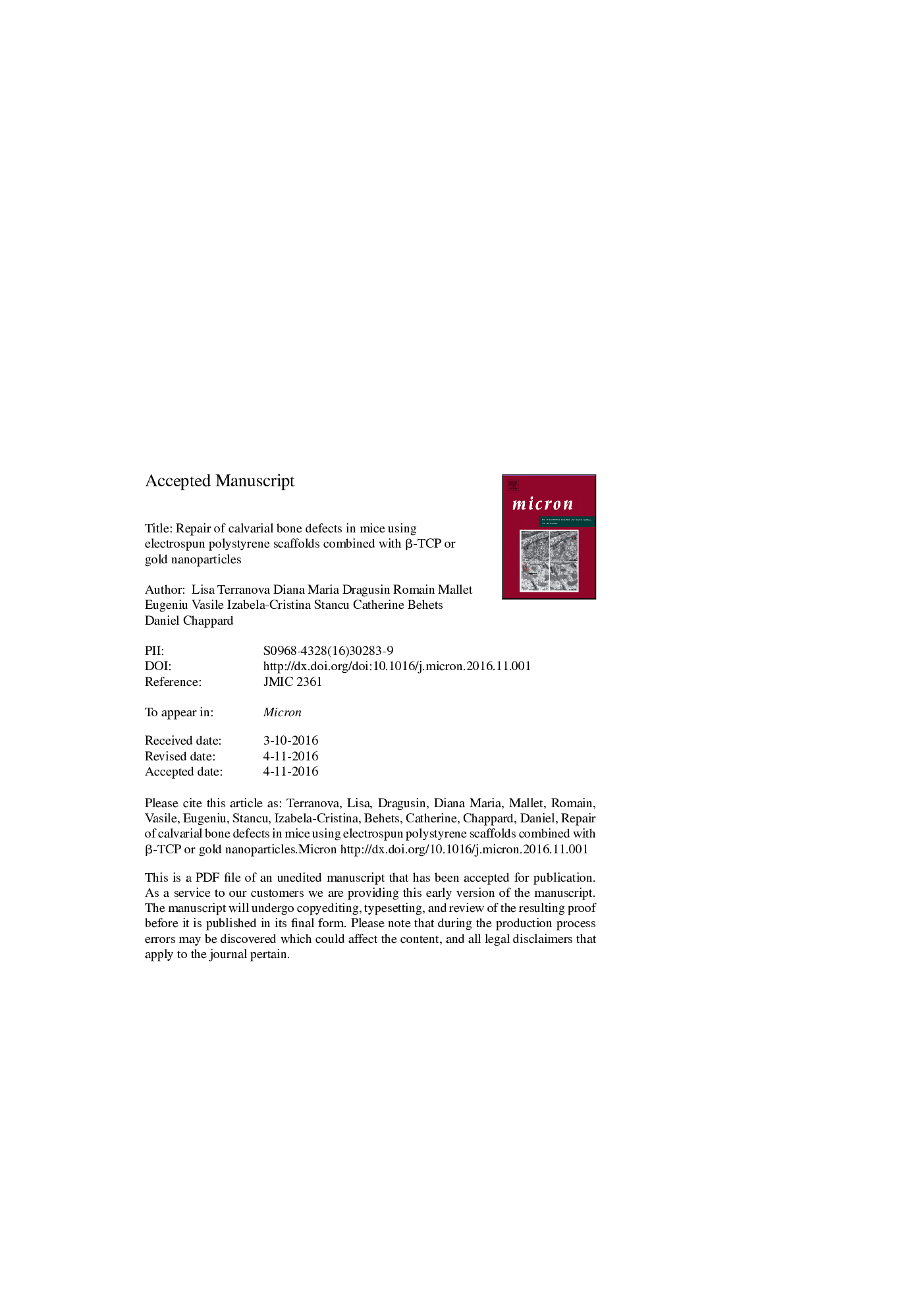| Article ID | Journal | Published Year | Pages | File Type |
|---|---|---|---|---|
| 5457014 | Micron | 2017 | 27 Pages |
Abstract
β-TCP-PS scaffolds showed a significantly higher cell proliferation in vitro than on PS or Au-PS alone; clearly, the presence of β-TCP grains improved cytocompatibility. Biocompatibility study in the mouse calvaria model showed that β-TCP-PS scaffolds were significantly associated with more newly-formed bone than Au-PS. Bone developed by osteoconduction from the defect margins to the center. A dense fibrous connective tissue containing blood vessels was identified histologically in both types of scaffolds. There was no inflammatory foci nor giant cell in these areas. AuNPs aggregates were identified histologically in the fibrosis and also incorporated in the newly-formed bone matrix. Although the different types of PS microfibers appeared cytocompatible during the in vitro experiment, they appeared biotolerated in vivo since they induced a fibrotic reaction associated with newly formed bone.
Keywords
Related Topics
Physical Sciences and Engineering
Materials Science
Materials Science (General)
Authors
Lisa Terranova, Diana Maria Dragusin, Romain Mallet, Eugeniu Vasile, Izabela-Cristina Stancu, Catherine Behets, Daniel Chappard,
